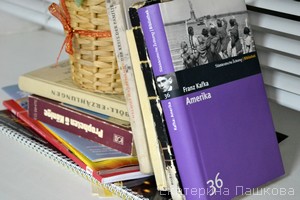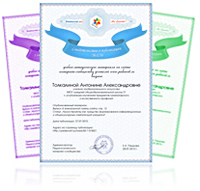Reading circles. Как организовать уроки чтения на английском языке в школе?
What is reading?
Reading is... Richard Day’s definition:
Reading is a number of interactive processes involving the reader and the text. The readers use their knowledge of the world, the topic, the language, to interact with the text to create, construct or build meaning.
How do we learn to read?
- We learn to read by reading. There is no other way.
- The more we read, the better readers we become.
- The more the teacher talks, the less the students read.
Reading strategies
Skimming is when we glance over a text to get the main idea, or “gist”.
Scanning is when we quickly look through a text to pick out key points .
Intensive reading is when we closely examine text for literary or linguistic purposes.
Extensive reading is reading “normally” for pleasure when we arе immersed in a book!
Виды чтения
- просмотровое (skimming)
- поисковое (scanning)
- изучающее (intensive)
- ознакомительное (extensive)
Extensive reading is what the students do at home when you’ve whetted their appetites with activities in the classroom and they can’t wait to see what happens next.! It’s also something they start doing when they realise that reading in a foreign language can be as pleasurable as in their own language-if you don’t try and understand every word.
Extensive reading is what the students do at home when you’ve whetted their appetites with activities in the classroom and they can’t wait to see what happens next.! It’s also something they start doing when they realise that reading in a foreign language can be as pleasurable as in their own language-if you don’t try and understand every word.
In extensive reading…
- most time is spent reading
- not answering questions
- not writing reports
- not translating
Sometimes, unfortunately, students may do these – but not as the primary focus
Comparing IR and ER
Intensive Reading
- 100% understanding
- Limited reading
- Difficult texts
- Word-for-word reading
- Use dictionaries
Extensive Reading
- Overall understanding
- Reading a lot
- Easy texts
- Fluent reading
- Ignore unknown words
Вернемся от теории к практике. На уроках учащиеся сталкиваются со множеством трудностей при чтении и обсуждении прочитанного. А именно:
- «психологический дискомфорт» — боязнь говорить на иностранном языке, сделать ошибку;
- не понимают речевую задачу;
- не хватает языковых и речевых средств;
- не вовлекаются в коллективное обсуждение;
- не выдерживают в необходимом количестве продолжительность общения;
Учитель может столкнуться с проблемой нехватки времени на уроке для полноценной работы с текстом. В своей практике, ввиду всех выделенных трудностей, эффективной оказалась организация внеклассной работы "Reading Circles", где учащиеся открывают для себя тот факт, что можно провести отлично время не только за чтением, но и за оживленным обсуждением текста, произведения в кругу друзей за чашечкой английского чая.
What are Reading Circles?
- Small groups of students who meet in the classroom to talk about stories
- Each student plays a role in the discussion
What are Reading Circles?
- Usually six Roles: Discussion Leader, Summarizer, Connector, Word Master, Passage Person, Cultur.
In a Reading Circle, each student plays a different role in the discussion
- Discussion Leader — leads the discussion.
- Summarizer— summarizes the characters and the plot.
- Connector — finds connections between the story and the real world.
- Word Master — looks for important words and phrases.
- Passage Person — looks for important passages in the story.
- Culture Collector— looks for cultural points for discussion.
The Discussion Leader’s job is to…
- Read the story twice, and prepare at least five general questions about it.
- Ask one or two questions to start the Reading Circle discussion.
- Make sure that everyone has a chance to speak and joins in the discussion.
- Call on each member to present their prepared role information
- Guide the discussion and keep it going
The Summarizer’s job is to…
- Read the story and make notes about the characters, events, and ideas.
- Find the key points that everyone must know to understand and remember the story.
- Retell the story in a short summary (one or two minutes) in your own words.
- Talk about your summary to the group, using your writing to help you.
The Connector’s job is to…
- Read the story twice, and look for connections between the story and the world outside
- Make notes about at least two possible connections to your own experiences, or to experiences of friends and family, or to real-life events.
- Tell the group about the connections and ask for their comments or questions
The Word Master’s job is to…
- Read the story, and look for words or short phrases that are new or difficult to understand, or that are important in the story
- Choose five words that you think are important for this story
- Explain the meanings of these words in simple English
- Tell the group why these words are important for understanding this story
The Passage Person’s job is to…
- Read the story, and find important, interesting, or difficult passages.
- Make notes about at least three passages that are important for the plot, or that have very interesting or powerful language.
- Read each passage to the group, or ask another group member to read it.
- Ask the group one or two questions about each passage
The Culture Collector’s job is to…
- Read the story, and look for both differences and similarities between your own culture and the culture found in the story.
- Make notes about two or three passages that show these cultural points
- Read each passage to the group
- Ask the group some questions about these, and any other cultural points in the story
The Reading Circle
Discussion Leader → Summarizer → Connector → Word Master → Passage Person → Culture Collector
Таким образом, у каждого учащего четко выделенная своя роль на уроке. Определенная символика на бэйджах показывает кто есть кто в дискуссии. В кабинете всегда висит график дискуссионного занятия и учащиеся, распределенные по ролям. Это позволяет заранее охватить тот оббьем материала, который был запланирован.
What one brings to the text is often more important
han what a text brings to us
Работа очень интересна не только старшеклассникам, но детям младшего школьного возраста. На занятии раздаются специальные таблицы, куда заносятся сведения из общего хода дискуссии — это отличная тренировка навыков разговорной речи.
Об авторе: Некрасова Елизавета Юрьевна, преподаватель английского языка МБОУ СОШ№ 37 г. Шахты, Ростовская область, Россия.


